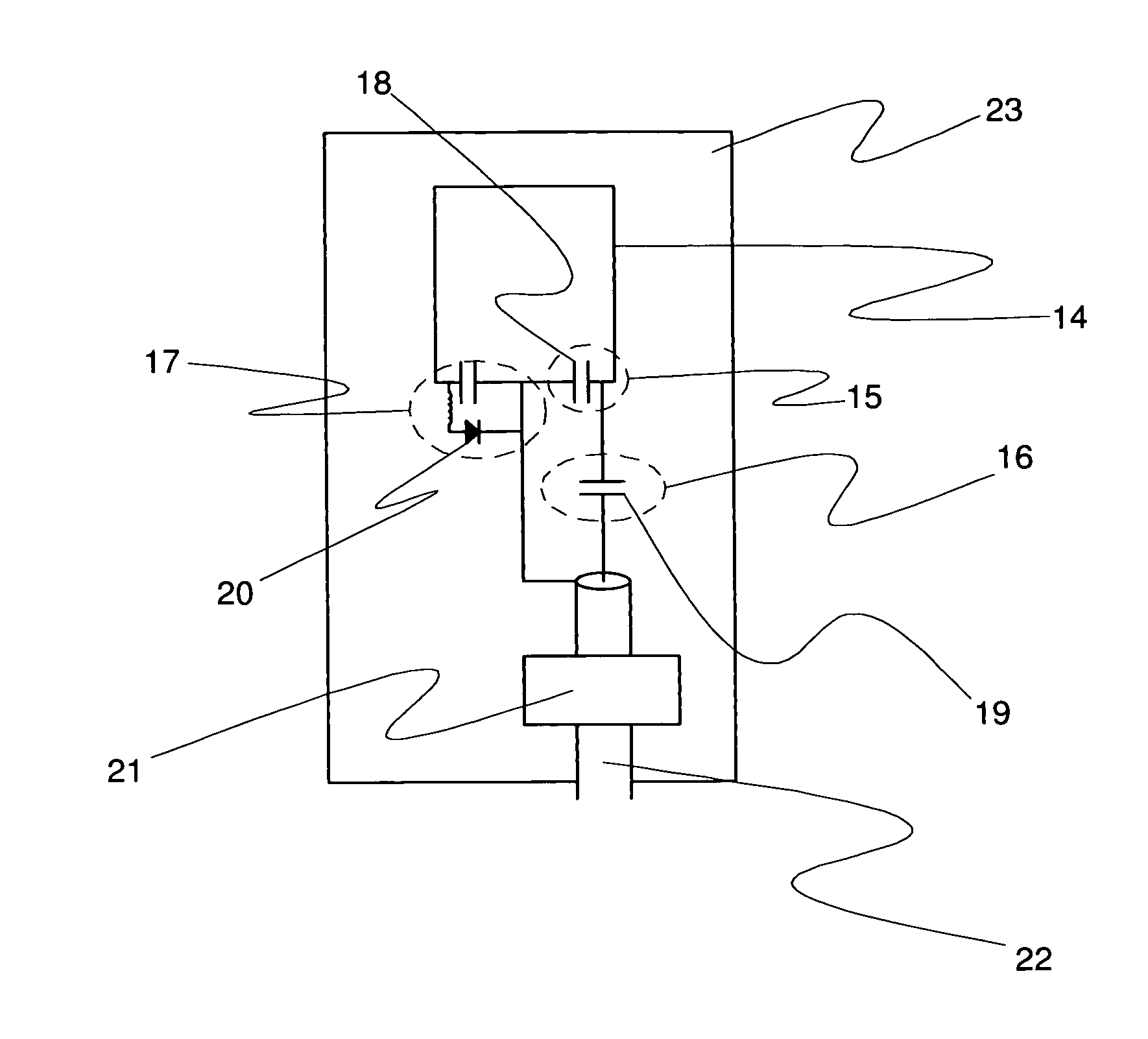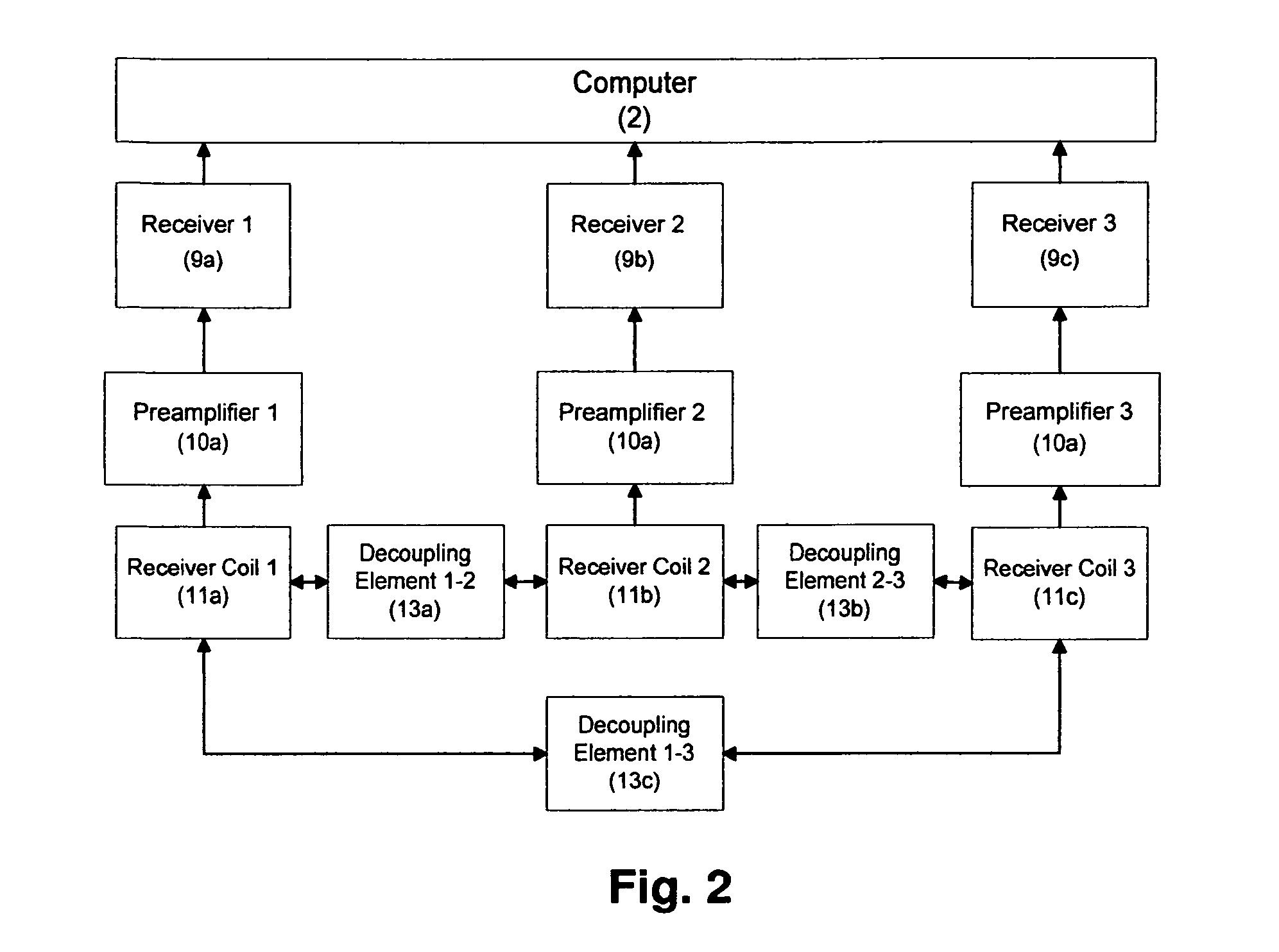Modular MRI phased array antenna
a phased array antenna and module technology, applied in the direction of using reradiation, geological measurements, magnetic measurements, etc., can solve the problems of generating artefacts in the mr image, couplings deteriorating the signal-to-noise ratio (snr), and indubitable voltage in neighboring antennas,
- Summary
- Abstract
- Description
- Claims
- Application Information
AI Technical Summary
Benefits of technology
Problems solved by technology
Method used
Image
Examples
Embodiment Construction
[0040]FIG. 1 is a simplified block diagram of the substantial components of a magnetic resonance imaging (MRI) system which is suitable for use with an antenna configuration described in the present invention.
[0041]The system consists of a computer which is connected to a storage unit and to an interface unit.
[0042]A radio frequency (RF) transmitter, an RF receiver and power supplies for the gradients are connected to the computer via the interface unit.
[0043]The power supply of the gradients supplies the gradient coils which generate the magnetic fields Gx, Gy and Gz with a gradient in the X, Y, and Z directions over the object to be imaged.
[0044]The RF transmitter is triggered via computer pulses, thereby generating the RF pulses of corresponding modulation in order to excite an MR signal in the object.
[0045]The RF pulses are amplified in an RF power amplifier to powers of between some hundred watts to several kilowatts in dependence on the imaging method, and are transmitted to t...
PUM
 Login to View More
Login to View More Abstract
Description
Claims
Application Information
 Login to View More
Login to View More - R&D
- Intellectual Property
- Life Sciences
- Materials
- Tech Scout
- Unparalleled Data Quality
- Higher Quality Content
- 60% Fewer Hallucinations
Browse by: Latest US Patents, China's latest patents, Technical Efficacy Thesaurus, Application Domain, Technology Topic, Popular Technical Reports.
© 2025 PatSnap. All rights reserved.Legal|Privacy policy|Modern Slavery Act Transparency Statement|Sitemap|About US| Contact US: help@patsnap.com



